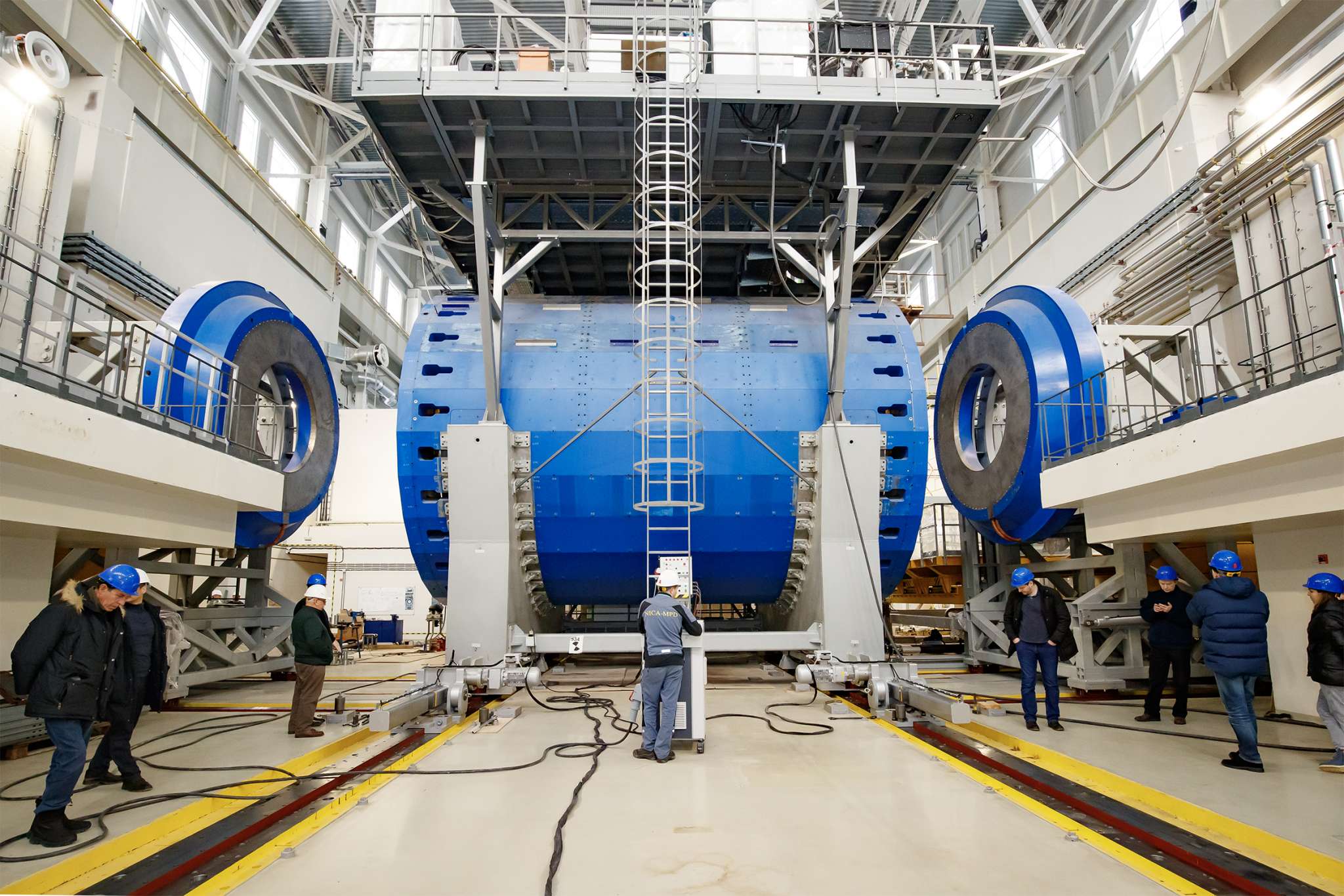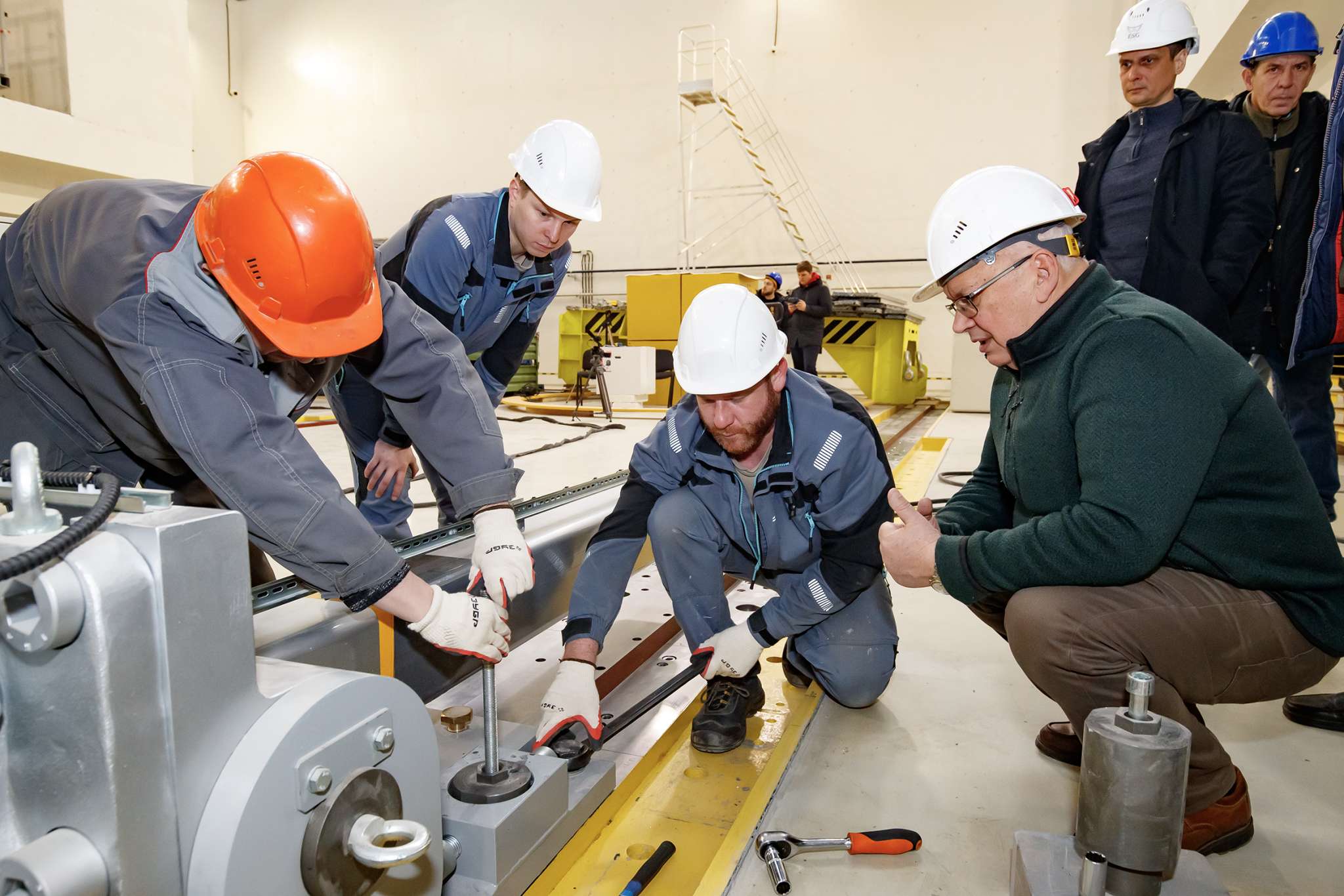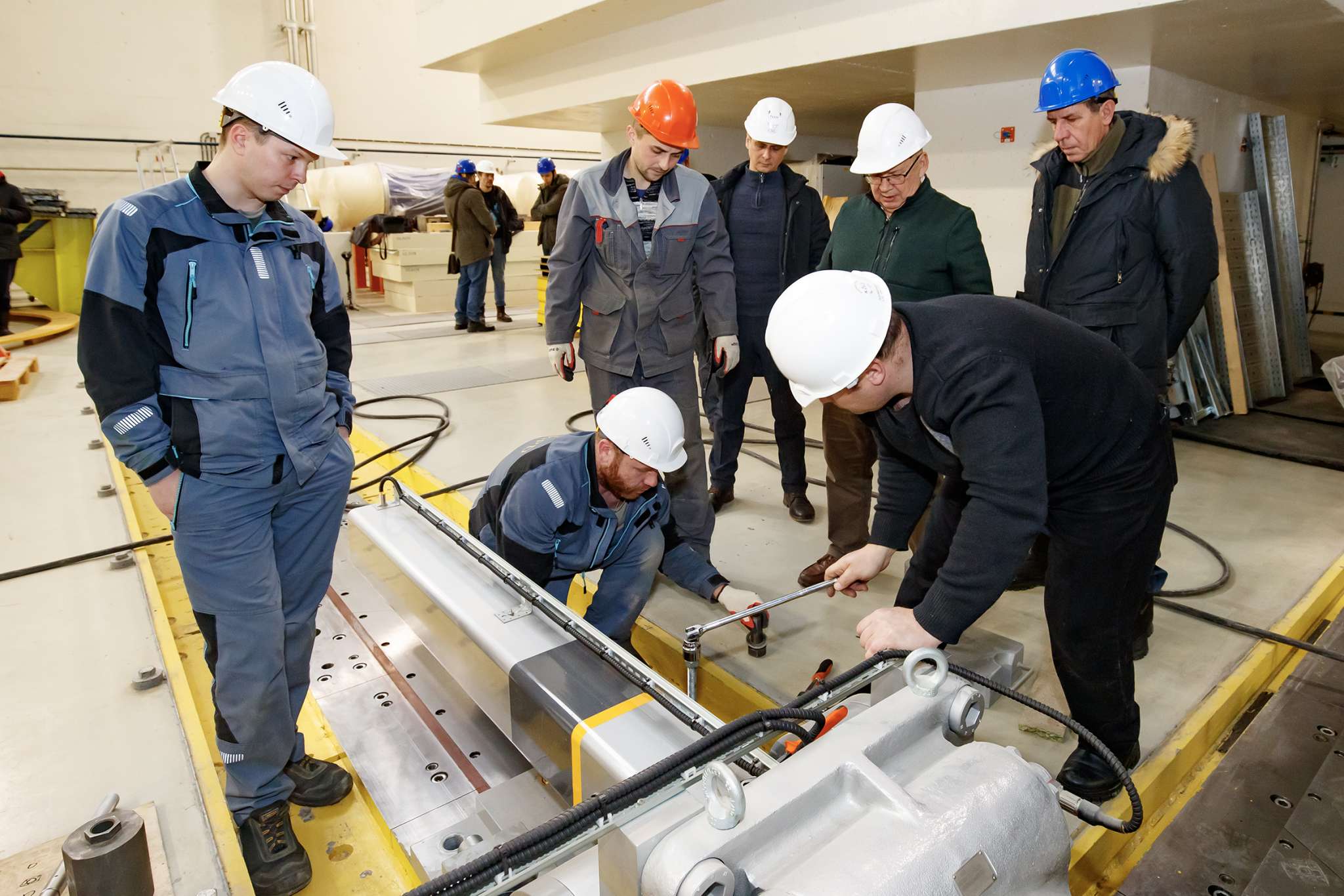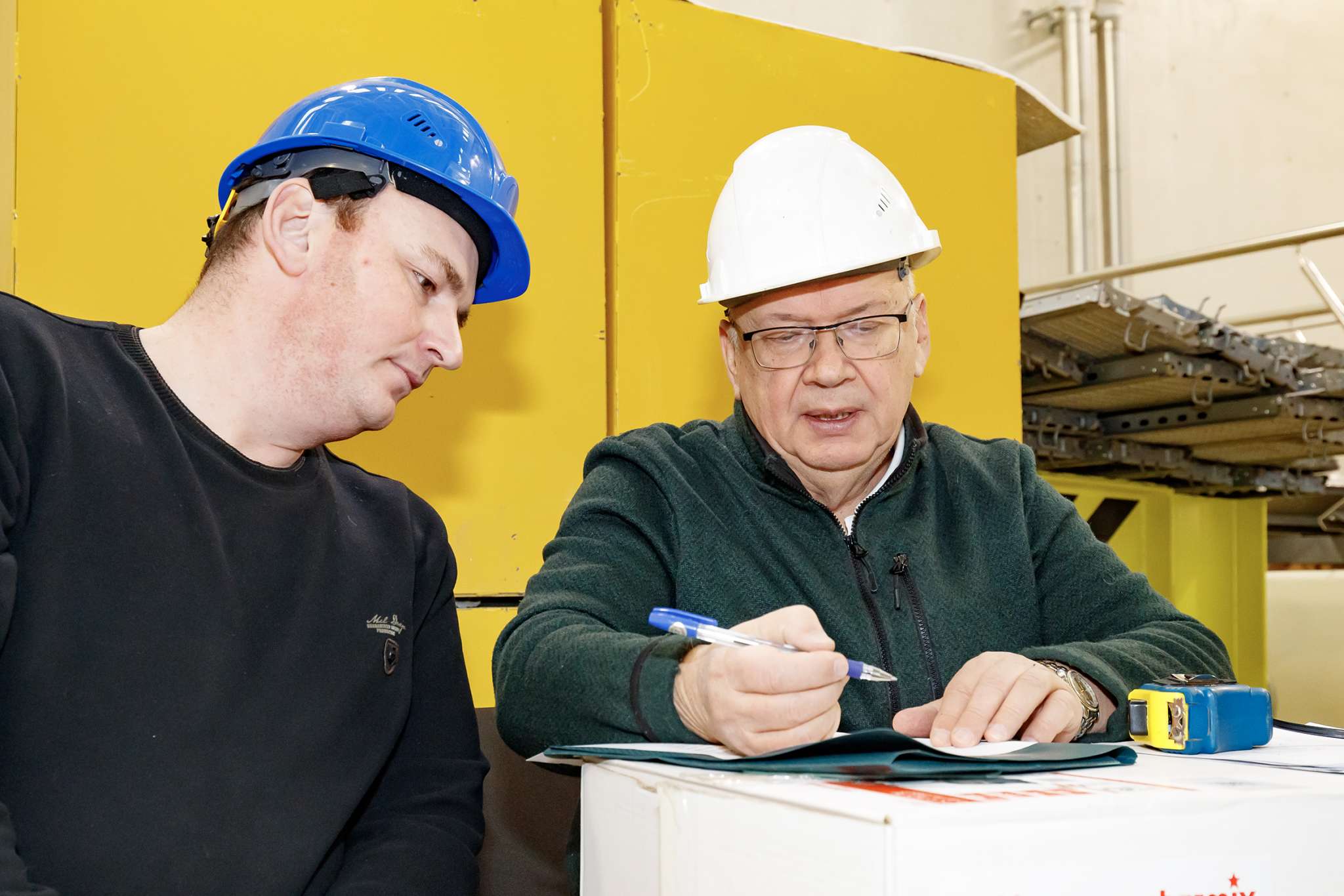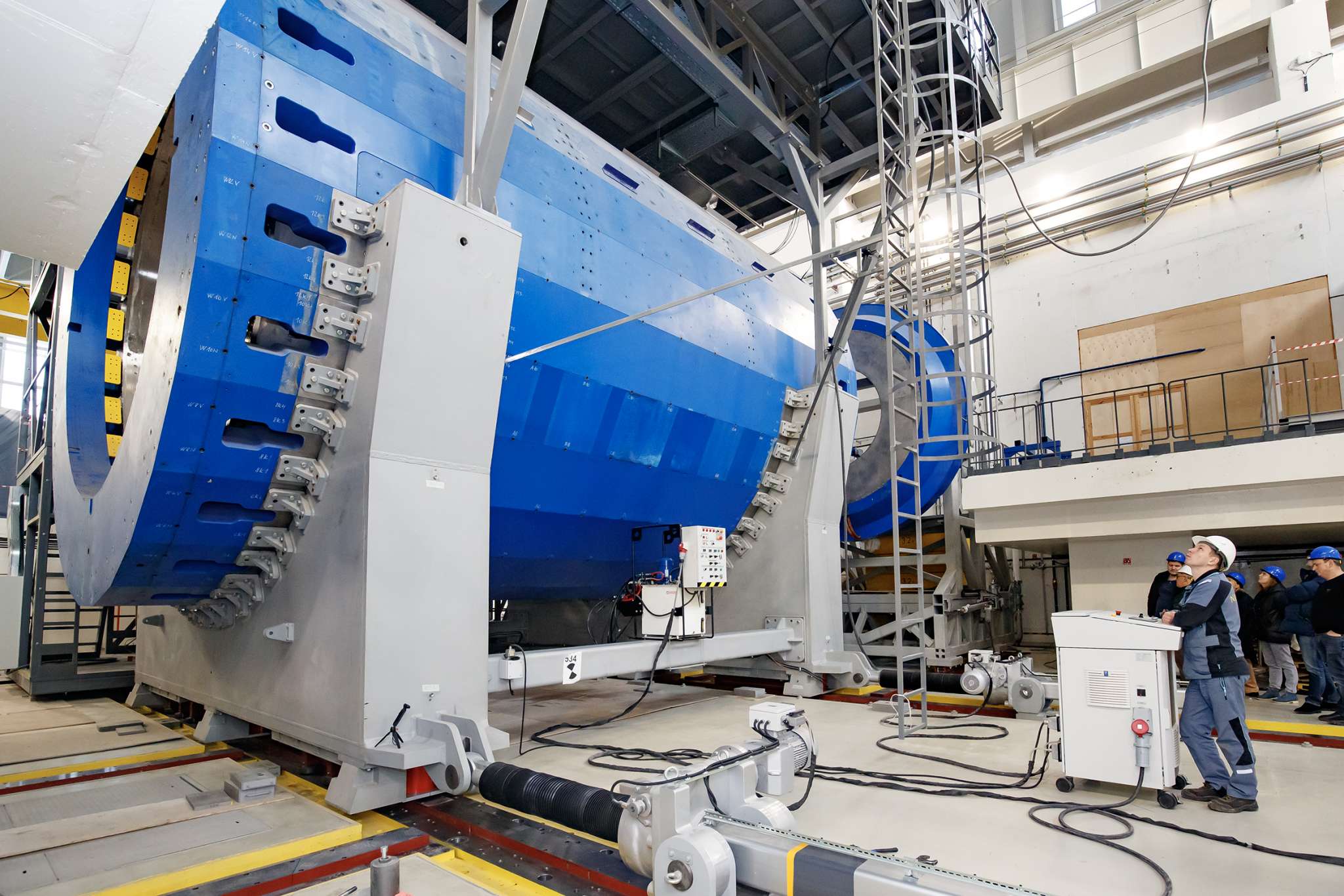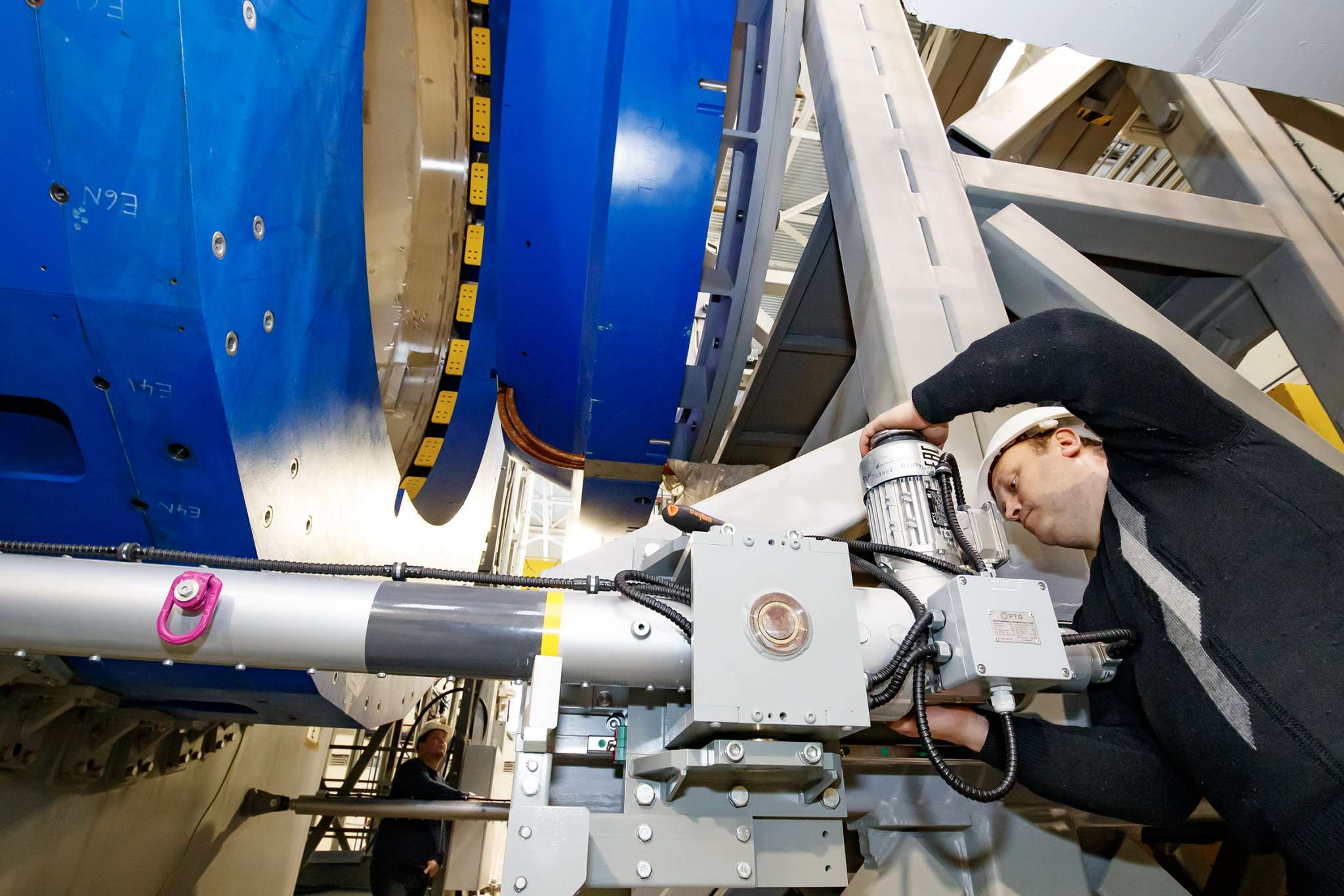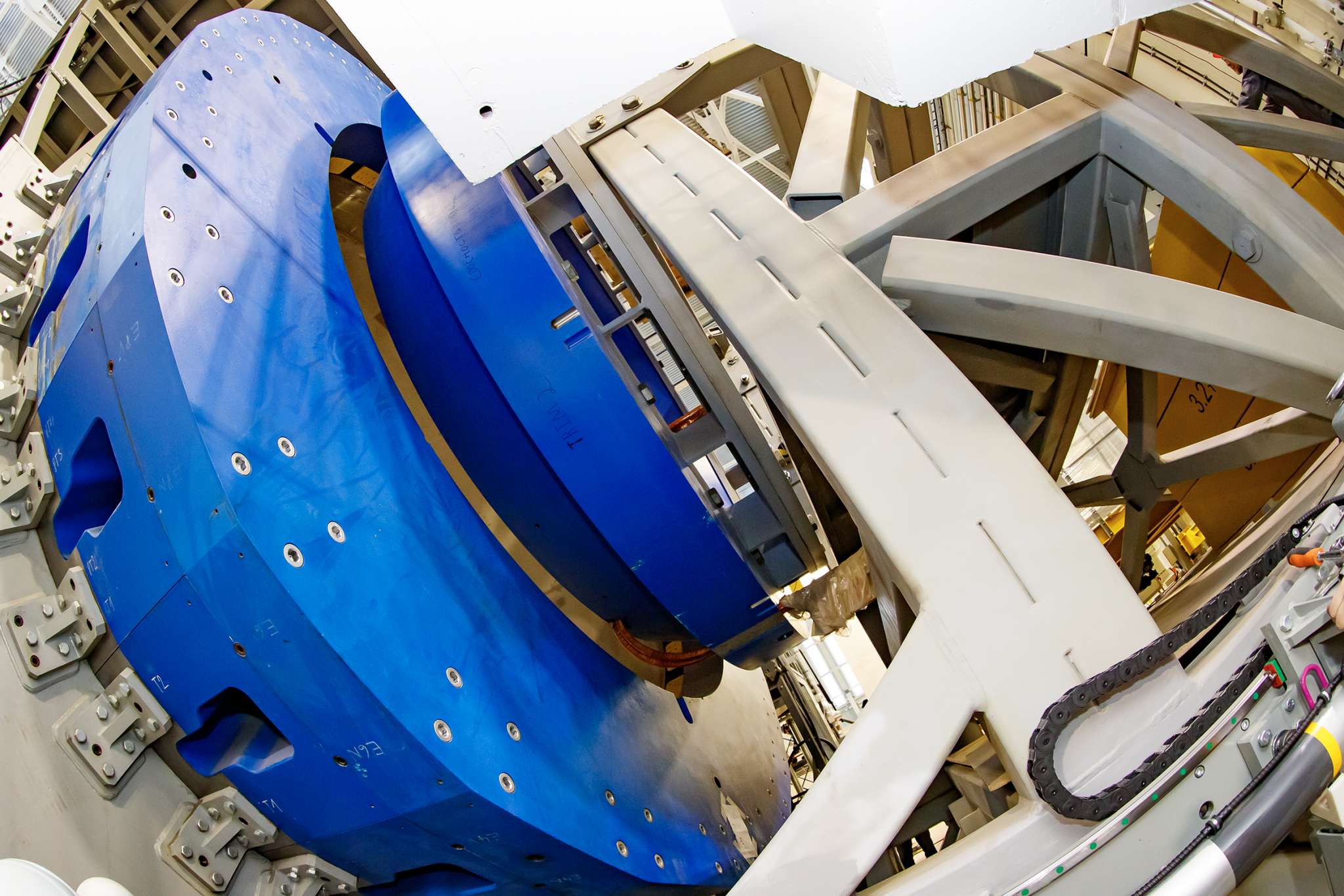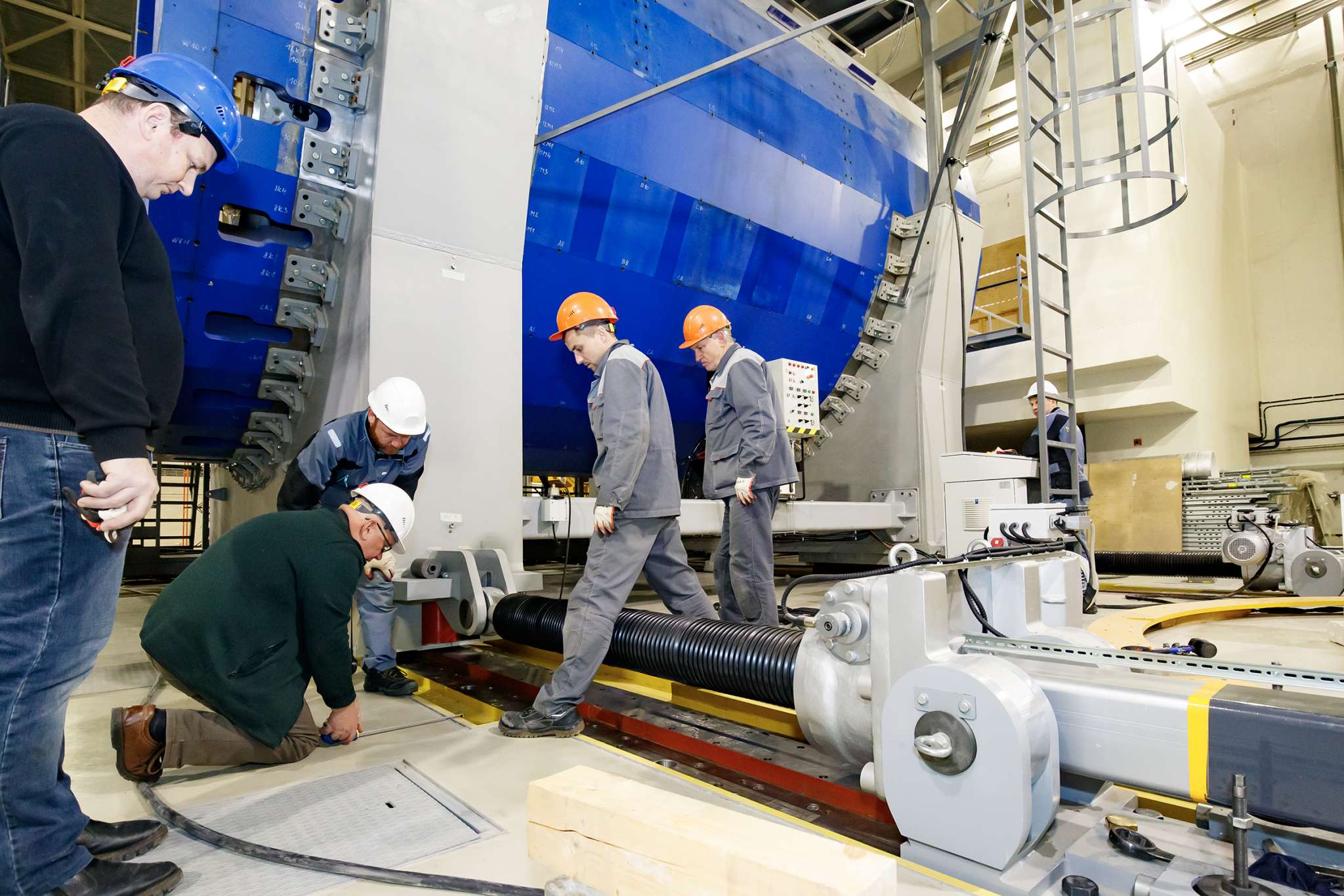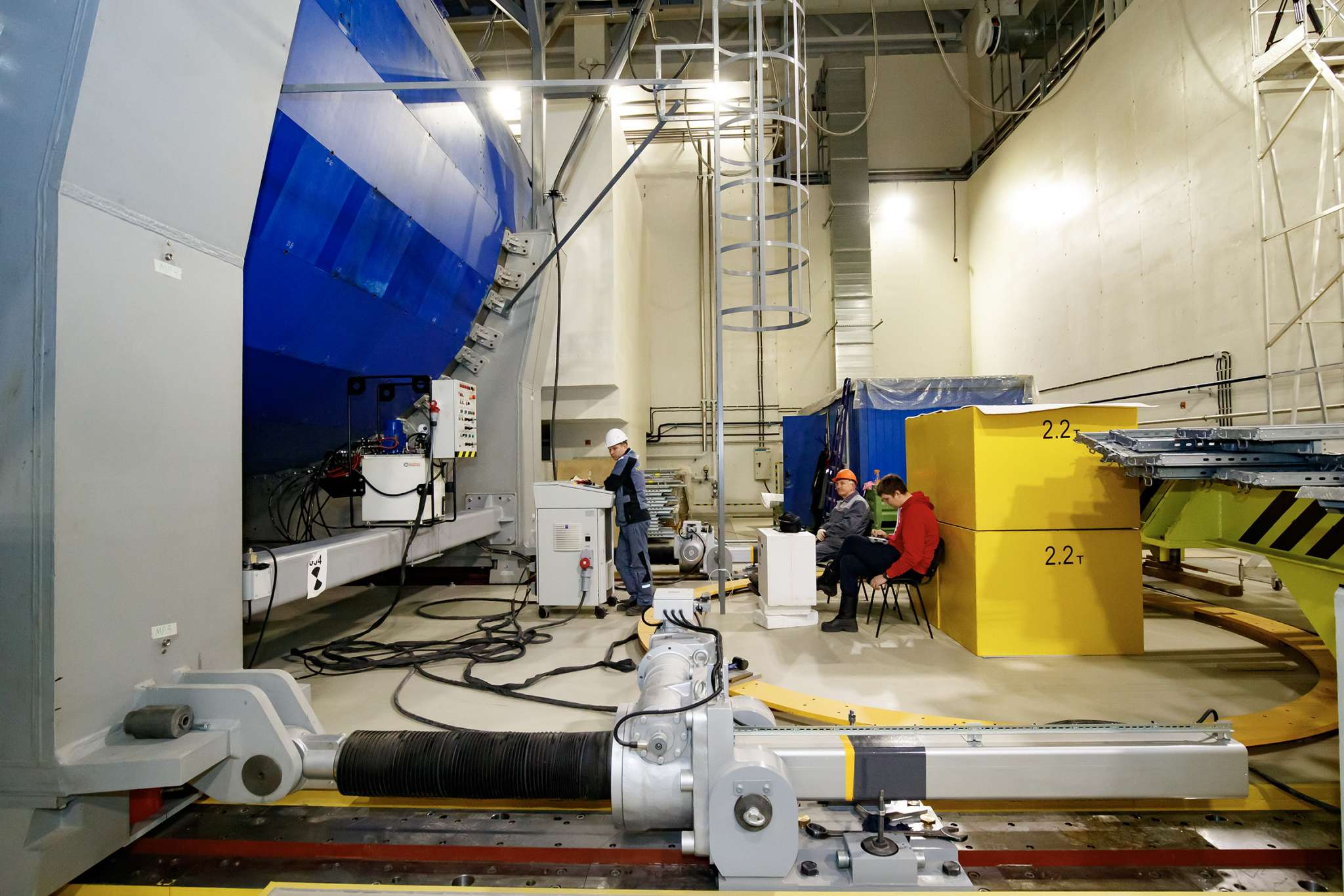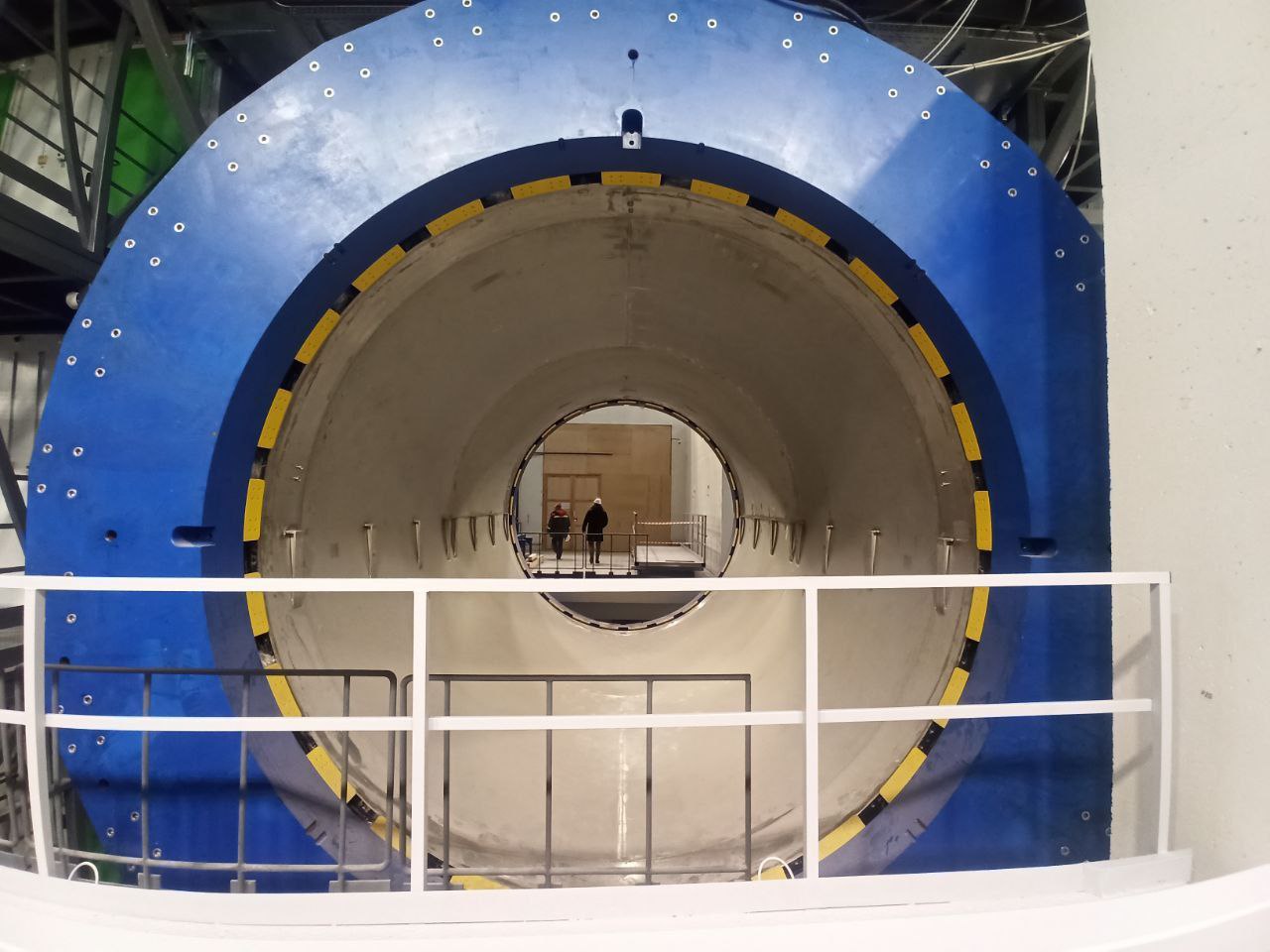Relocation of MPD solenoid at NICA
News, 11 December 2023
On 5–6 December 2023, the technological relocation of the superconducting solenoid took place in the pavilion of the Multi-Purpose Detector (MPD) of the NICA Accelerator Complex. The Detector and the side platform for electronics are now in the working position – the beam position. After adjusting the working position and conducting a test connection of the water cooling pipes, the specialists are moving the solenoid back to its original position at the assembly area, where the staff will start assembling the MPD subdetectors.
The solenoid’s relocation spanned a total distance of about 10.5 m, split into several stages, 1.5 m each. After activating the handling system, the specialists shifted the solenoid with its platform along the special rails that it stands on, at a speed of 3 mm per second. The vertical position of the upper contact surface of the rails and the straightness of the side surface of the base rail were adjusted with an accuracy of 0.4 and 0.2 mm respectively. Thus, the relocation of the massive detector, indistinguishable to the naked eye, takes about 8 minutes and 20 seconds per stage, with a 5-6 minutes preparation in between.
As VBLHEP Deputy Chief Engineer, NICA/MPD Chief Designer Nikolay Topilin noted, the entire process of the detector’s relocation is much faster than at CERN, where it takes about 10 minutes, with a two-hour preparation. As Nikolay Topilin explained, the Laboratory’s team developed an innovative method for setting up the support, which was used to enhance the widely used handling system specifically for MPD. “Such technology saves a huge amount of time,” the NICA/MPD Chief Designer said. He noted that the handling system allows for effortless relocation of a facility weighing about one thousand tonnes, which is roughly as much as the solenoid will weigh in the future, once the subdetectors are installed.
“Our task is to move the entire magnet yoke precisely to the beam axis and adjust it horizontally and vertically with an accuracy of 2 mm. The specialists will now start installing the water cooling pipes, although they won’t be connected until 2 or 3 days later, after we put the magnets in the correct position. After that, we will disconnect the pipes and return the magnet to its original position, in which it will remain for a long while – to the standard position for the installation of detectors,” Nikolai Topilin commented.
“Technological relocation and the connection of the water cooling system is taking place. The contours of the side platform for electronics are being tested, and so is the overall possibility of technological relocation, with the consideration of the infrastructure of the cryogenic flexible pipelines installed. The solenoid is being positioned to the theoretical axis of the accelerator”, VBLHEP Deputy Chief Engineer Konstantin Mukhin explained.
On 11 December, the project staff moved the solenoid back to the inoperative position to assemble the detectors. As a results of relocating and adjusting the magnet, its position was fixed with zero deviation vertically and 0.9 mm horizontally.
“The next point of the plan is a test assembly of poles in the magnetic yoke itself. We want to put the magnet complex to the assembly position without the subdetectors,” Konstantin Mukhin added. With the coils installed, the specialists will test power and measurement systems of the magnetic field inside the solenoid. After measuring the magnetic field, the experts will remove the coils, and then continue the cryogenic cooling to operating temperatures of 4.5 K in 2024. The project staff will begin assembling the primary structure, and then the subdetectors.
The previous relocation of the solenoid took place this April.
